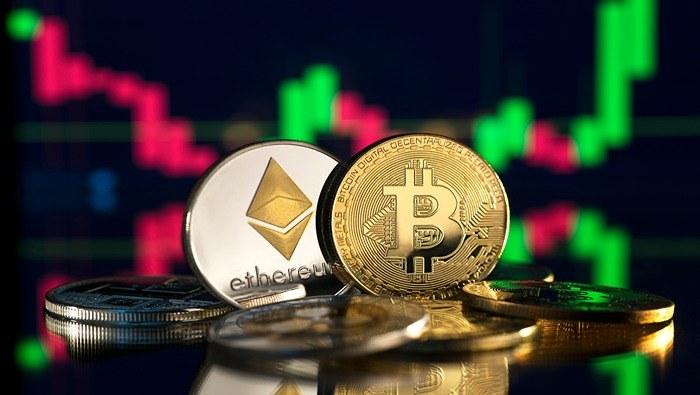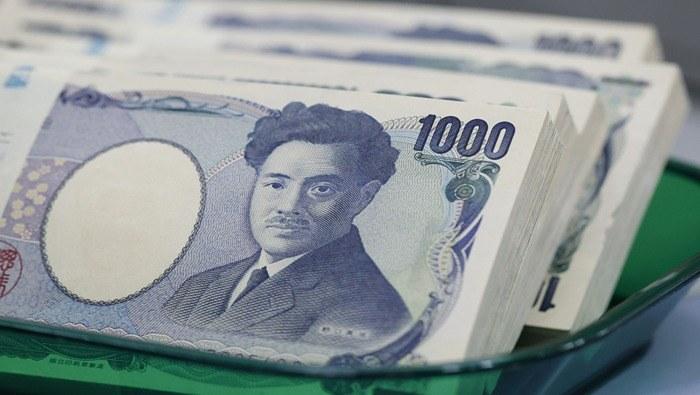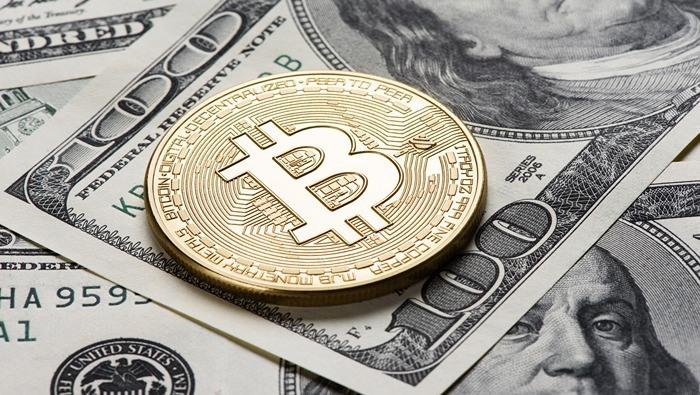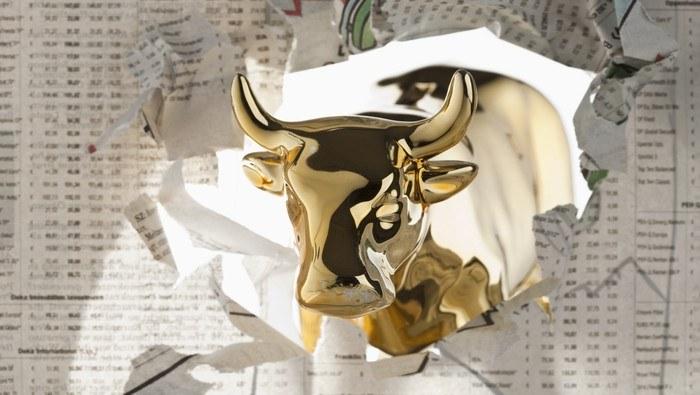2023-12-31 12:00
Supply Cuts Vs Shaky Data Oil prices hit their highest level of 2023 in September but have declined very sharply since. The United States West Texas Intermediate benchmark topped out at $94.99/barrel on September 28 as major producers Saudi Arabia and Russia both opted to extend production cuts. However, crude prices have shed more than $20 from those peaks, despite the prospect of ongoing production curbs by the Organization of the Petroleum Exporting Countries and its allies- known as the OPEC Plus group. Shaky economic data kept the market fretting about likely end-demand for energy from some of the largest importers, with China in particular focus. Indeed. news that production cuts would be extended into the New Year wasn’t enough to keep prices from falling further in November. Moreover, the large, developed economies are still struggling with the burden of interest rates at highs not seen for a generation, with the lagged effects of these perhaps still to be felt in many cases. Start your voyage to becoming a knowledgeable oil trader today. Don't let the occasion to acquire vital insights and strategies pass you by –request your 'How to Trade Oil' guide now! Crude Bulls Hope For Increased US Demand, IEA Thinks They’ll Get It The struggle between major producers’ desire to support prices and fundamental worries about global demand is of course not going to end simply because the calendar has flipped over to a new year. But there are some bullish glimmers in sight for a market that’s clearly been under pressure for months. Indeed, the International Energy Agency has just increased its own forecast for crude demand in 2024. It’s looking for an increase of 1.1 million barrels per day, up 130,000 barrels from its previous forecast, citing an improvement in US appetite for oil. Based on the most recent commentary from the Federal Reserve, financial markets now dare to hope that interest rate cuts may come as soon as March. This prospect alone has given crude a modest lift simply by weakening the Dollar and making oil products priced in it more attractive. The Fed May Cut Rates. Will Anyone Else? Still, even if the US has defeated inflation, it’s far from clear that other major economies are as comfortable. The Eurozone and United Kingdom still look set for extended periods of higher borrowing costs as they attempt to wrestle prices lower, with the monetary view ahead not less certain and possibly more diverse than it has been for a long time. Perhaps most worryingly of all for energy markets China remains mired in a deflationary slowdown, with Beijing seemingly unwilling or unable to unleash the sort of massive stimulus markets would like to see. So, while there’s some cautious monetary optimism heading into 2024, there are clearly some major headwinds for the oil markets too. It’s also possible that investors are getting ahead of themselves with those US rate-cut bets. Inflation can be very hard to kill, and prone to resurgence even when it seems to be fading out. Crude may not slide below its most recent lows in the coming three months, but it’s not likely to revisit those 2023 highs either. https://www.dailyfx.com/news/crude-oil-q1-fundamental-forecast-us-rate-cut-hopes-offer-support-amid-demand-worries-20231231.html

2023-12-31 06:00
Excel in your trading endeavors for Q1 2024 with our comprehensive guide packed with high-potential strategies curated by DailyFX! Coinbase, the largest cryptocurrency exchange in the US, has seen its shares perform strongly in the second half of this year, rallying from around $46 in early June to a current level of $150. This rally has been driven by a pickup in interest, and volume, in the cryptocurrency space as markets price in the potential announcement of several spot Bitcoin ETFs and the latest Bitcoin halving event. There are currently 12 spot Bitcoin ETFs sitting on the US Securities and Exchange Commission’s desk waiting for approval from a range of blue-chip investment companies including BlackRock, Franklin Templeton, and Fidelity. These spot ETFs invest directly in Bitcoin - unlike the current futures-based Bitcoin ETFS – and as an investment vehicle would allow a wide range of investors to gain exposure to a regulated product that tracks the performance of Bitcoin accurately. Coinbase is the named custodian in nine of the twelve applications and would hold the underlying Bitcoin on behalf of the issuing companies. Coinbase would charge for this service. The latest Bitcoin halving event is predicted to occur in mid-April 2024 and with it will bring increased volume and volatility before and after the event. This increase in Bitcoin turnover will also waterfall down the cryptocurrency market into other larger-cap cryptocurrencies and the alt-coin market. While some of this increased interest has already been priced into the share price, the chart suggests that the shares can go higher still. The shares traded as high as $428 when they appeared on the market in April 2021 before falling over the next two years. Coinbase shares have broken above the 20- and 50-day simple moving averages and now look set to test the 38.2% Fibonacci retracement level at $183 before the 50% Fibonacci retracement level at $230 comes into play. The weekly chart also shows how Coinbase shares have turned from making lower highs and lower lows to now making higher highs and higher lows, a bullish setup. Enhance your proficiency in cryptocurrency trading now with our all-inclusive guide, loaded with crucial insights and powerful strategies for mastering digital assets. Claim your free copy today! As always with cryptocurrencies, a strong degree of caution and firm risk management need to be applied before making any investment decision. If ETFs are not approved by the SEC or are delayed further, Coinbase shares could turn lower quickly, and traders need to factor this in before entering any trade. Coinbase Weekly Chart Source: TradingView, Prepared by Nicholas Cawley https://www.dailyfx.com/news/coinbase-coin-growing-tailwinds-as-cryptocurrency-interest-swells-20231231.html

2023-12-31 00:00
This article focuses exclusively on the euro’s technical outlook for the first quarter. For a more in-depth look at the common currency’s fundamental profile for the next three months, request the full first-quarter forecast. The trading guide is free! EUR/USD with Limited Room to the Upside as Resistance Comes into Focus EUR/USD is on track to close out 2023 on a positive note, recovering a sizeable chunk of the decline witnessed in the second half of the year. The medium-term trend appears to the upside but yield differentials (purple line) struggle to motivate a prolonged period of upside potential. The difference between the yield on the German 10-year bund minus the yield of the 10-year US Treasury has struggled to show a meaningful move to the upside despite price action managing to maintain the broader move higher. This is something that could limit EUR/USD upside in Q1 2024. EUR/USD Alongside German-US Yield Differentials Source: TradingView, Prepared by Richard Snow EUR/USD strives to make higher highs and higher lows as the medium-term trend to the upside remains constructive. Incoming inflation and growth data is likely to influence price action throughout the first quarter but there does appear to be further room to the upside. The first zone of resistance appears at the 1.1033 level, the January 2023 spike high, followed by the 1.1100 level which witnessed many failed attempts to trade beyond the marker. 1.1100 could prove to be too much to handle once again and if that is the case, EUR/USD could trade within 1.1100 and 1.0656 for the first quarter of the year. This is a wide range but there are a lot of uncertainties ahead. On the upside, one may view 1.1033 as a tripwire for a potential bullish continuation but anything falling short of 1.1100 may usher in another phase to the downside. A move below 1.0929 (the 50% Fibonacci retracement of the 2021-2022 decline) highlights the 1.0724 level of support. In other words, the beginning of the quarter may see another attempt to trade higher, if unsuccessful, a return to sub 1.1000 levels could come into play. EUR/USD Weekly Chart Source: TradingView, Prepared by Richard Snow EUR/JPY Support to Come Under Pressure Amid BoJ Pivot EUR/JPY is likely to come under pressure as speculation around the Bank of Japan’s withdrawal from ultra-loose policy draws nearer. Towards the end of 2023, the pair dropped sharply, halted by the zone of support around the 154.00 marker, which happens to include the 38.2% Fibonacci retracement of the 2023 rise. The upside potential in EUR/JPY provides an unflattering risk-to-reward ratio, particularly if the pair struggles to trade above 159.75 – the prior level of resistance. Speculation around an eventual BoJ pivot is likely to gain momentum especially if inflation and wage growth continue to grow – as the trend in the data would suggest. Yen strength could result in a test of 154.00 in early Q1, with potential momentum opening the door to 151.60 and even the 61.8% Fibonacci retracement at 147.67 in an extreme sell-off. Given the size of the weekly candles, momentum appears to have shifted from advances on the upside, to bouts of selling and a greater potential for EUR/JPY weakness. EUR/JPY Weekly Chart Source: TradingView, Prepared by Richard Snow https://www.dailyfx.com/news/forex-euro-q1-technical-forecast-a-mixed-picture-20231231.html

2023-12-30 18:00
I am sticking with my short trade idea from Q4 2023. Although my Q4 idea paid off handsomely in the end, I still see massive scope for another push lower on USD/JPY in the new year. I would suggest reading the Q4 top trade idea as well for further insights. USD/JPY held the high ground for the first half of Q4 2023 before finally declining from near the 2022 highs. The selloff gained traction following growing chatter toward the end of November regarding a policy shift from the BoJ, something which I personally shot down and was proven right following the BoJ meeting on December 19. The BoJ stuck to its current monetary policy since as I believed they would. In Q1 of 2024 I fully expect these expectations to grow despite what the BoJ said at the December meeting. The BoJ Governor Kazuo Ueda I believe is working diligently and will eventually deliver the shift in monetary policy that the market expects. Even if this does not come to fruition in Q1 I still think market expectations and the BoJ to keep USD/JPY on the back foot. A key metric to monitor in Q1 will be wage growth as Governor Ueda has emphasized on numerous occasions. Sustainable wage growth above inflation is likely to be the precursor for a shift in policy and potential market expectations for a shift in policy. Looking for new strategies for 2024? Explore the top trading ideas developed by DailyFX's team The US Federal Reserve on the other hand have already stated that they expect 75bps of rate cuts in 2024. The timing of these however is what is driving market moves at the moment and is likely to continue with each high-impact data release out of the US. I do think inflation will come down or remain close to current levels with the main risk being a geopolitical one which could once again dent supply chains. This could lead to stubborn inflationary pressure and thus delay rate cuts from the Fed in 2024 and thus provide the US Dollar with some form of support. Overall though I’m leaning toward continued USD weakness in Q1 which is likely to work in the favour of my short trade idea on USDJPY. Interested in learning how retail positioning can shape the short-term trajectory of USD/JPY? Our sentiment guide explains the role of crowd mentality in FX market dynamics. Get the guide now! USD/JPY Technical Analysis Looking at the technical picture, we are currently pushing higher following the recent selloff and currently trades between a key support and resistance levels resting at 142.00 and 145.00 respectively. Given the stark selloff since the highs just shy of the 152.00 handle, I would ideally prefer a deeper pullback before looking for potential short opportunities. USD/JPY Weekly Chart Source: TradingView, Prepared by Zain Vawda Zooming in on the daily chart, I will break down a few key areas I will focus on for potential shorts. I will be watching the 146.50 area as a potential area for shorts but the area that would potentially provide a better risk-to-reward opportunity is likely to be a retest of the 50 and 100-day MAs. Another sign that may be used to potentially pull the trigger would be a potential death cross pattern as the 50-day MA looks to cross below the 100-day MA. If USDJPY pushes beyond these levels, then the 150.00 level will be of interest and the only thing that would invalidate my bias at this stage would be a break above the previous highs at the 152.00 handle. USD/JPY Daily Chart Source: TradingView, Prepared by Zain Vawda Support Levels: 142.00 140.00 (psychological level) 138.70 135.00 Resistance Levels: 146.50 147.50 150.00 (psychological level) 152.00 (2022 high) https://www.dailyfx.com/news/forex-short-usd-jpy-rising-rate-cut-expectations-and-fx-intervention-by-the-boj-20231230.html

2023-12-30 12:00
Bitcoin goes into the first quarter of 2024 with two specific events set to determine price action in Q1 – a spot Bitcoin Exchange Traded Fund (ETF) and the run-up into the latest Bitcoin ‘halving’ event. While there is historical evidence of how Bitcoin trades into, and after, a halving event, the potential introduction of a slew of spot BTC ETFs and how it will affect price action is still unknown. If one stands back and looks at the possible impact of one, or both, of these events, the outlook for Bitcoin looks bright. What is a Spot Bitcoin ETF? A Spot Bitcoin Exchange Traded Fund (ETF) invests directly in physical Bitcoin rather than using Bitcoin futures contracts. The provider of the ETF buys and holds BTC on behalf of its customers to track its price movements. The ETF aims to match any BTC price movement or performance less fees and expenses. The ETF allows individuals and companies to gain exposure to Bitcoin price movement without having to trade on a cryptocurrency exchange or set up a digital wallet. The ETF trades with a direct correlation with the underlying Bitcoin, unlike the Bitcoin futures ETFs which can trade differently to the cash price due to the rolling of the underlying contracts. The US Securities and Exchange Commission (SEC) currently has 12 spot Bitcoin ETF applications sitting on their desk. These include applications from heavyweight institutional names including BlackRock, Fidelity, and Invesco. While the SEC is still looking at all 12 applications, the current market thinking is that a spot Bitcoin ETF may well be approved in early January 2024. Further, if one application is approved, the SEC may well approve all, current, 12 applications at the same time so no one ETF provider has a ‘first mover advantage’. Improve your cryptocurrency trading skills today with our comprehensive guide packed with essential insights and effective strategies for navigating the world of digital tokens. Get a free copy now! What are the Potential Implications of a Spot Bitcoin ETF? A spot BTC ETF would bring Bitcoin to a wide range of new and current investors, increasing mainstream adoption of an asset class that has long been unregulated and at times illiquid. Increased adoption would increase liquidity and reduce volatility, while a regulated product issued via some of the world’s largest fund managers would ease concerns over ‘bad actors’ acting with fraudulent intentions. While it is difficult to gauge the potential demand that these ETFs may stoke, it is possible that new demand for underlying Bitcoin from these ETFs will drive the price of the largest cryptocurrency by market capitalization much higher. Bitcoin Halving – What Does It Mean? Bitcoin halving is an event, that occurs approximately every four years and is programmed into Bitcoin’s code that cuts miners’ rewards for adding new blocks to the Bitcoin by 50%. This reduction in supply leads to increased scarcity and, if demand for Bitcoin remains constant or increases, drives the price of BTC higher. In 2012 the halving cut BTC mining rewards from 50 BTC to 25 BTC, in 2016 from 25 to 12.5 BTC, and in 2020 from 12.5 BTC to 6.25. In next year’s halving – expected in mid-April - the reward for mining a Bitcoin block will be cut to 3.125 BTC. As Bitcoins become scarcer, due to reduced mining rewards, and with only 21 million Bitcoins hard-coded to be ever produced, a supply-demand imbalance has so far, driven the price of Bitcoin higher into, and more noticeably after the event. Navigate crypto trends with confidence. Get the bitcoin forecast now! Historical Bitcoin Halving Price Action November 28th, 2012 Halving Price - $13 --- 2013 Peak Price - $1,125 July 16th, 2016 Halving Price - $664 --- 2017 Peak Price - $19,798 May 11th, 2020 Halving Price - $9,168 --- 2021 Peak Price - $69,000 https://www.dailyfx.com/news/bitcoin-q1-fundamental-outlook-positive-tailwinds-on-the-horizon-20231230.html

2023-12-30 06:00
Bullish Gold: Top Trade Q1 2024 Gold has certainly been on the move throughout 2023, rising around 15% from the start of the year until May, then dropping 13% into October before rising nearly 19% to print an all-time high at the beginning of December. There are several factors influencing gold’s price that appear to be pulling in the same direction ahead of Q1 of 2024. These help to form the trading thesis and are outlined in the rest of this article along with technical considerations. Elevate your 2024 game: Discover DailyFX’s top trading opportunities for the first quarter of 2024. Request the guide now! Weaker US Dollar and Declining Treasury Yields Support Gold Gold inherently has an inverse relationship with US Treasury yields as well as the US dollar. When the dollar weakens this stimulates gold purchases for foreign buyers and since gold offers no yield, the metal gains in attractiveness whenever yields drop as the opportunity cost for holding gold declines. Despite the Fed still not ruling out the possibility of another rate hike, markets have decided that the pathway for the Fed funds rate is to the downside. This is revealed via the sharp drop in Treasury yields and the subsequent move lower in the dollar. The chart below reveals how far gold prices have risen while USD and yields have fallen. Therefore, even if gold prices were to stall, the lower trend in yields and USD are likely to keep XAU/USD prices supported at the very least. Spot Gold Price (gold line) with DXY (green) and US 10-Year Yield (blue) Overlayed Source: TradingView, Prepared by Richard Snow The macro-outlook for the US economy is uncertain but conversations have advanced around two possible outcomes: a soft landing, or a hard landing. Under a soft landing, inflation makes great strides towards the 2% target, allowing interest rates to be lowered while the economy shows moderate growth. The hard landing is more ominous and would see economic growth and unemployment deteriorate to such a degree that the Fed would need to cut interest rates in an effort to stimulate the economy again. In either outcome, interest rates are expected to come down, a scenario that bolsters the value of gold and that’s before even considering the safe haven appeal of the precious metal. Next year is likely to see a continuation of two major geopolitical conflicts with the potential for another in Asia. Gold (XAU/USD) Technical Considerations From a technical standpoint, the bullish outlook on gold is a little more complicated than the fundamental thesis suggests. A lot of positive momentum has already been priced in, providing a less impressive risk-to-reward ratio. It is with this in mind that an extended pullback would be favourable prior to assessing bullish continuation setups. The first level of support that could provide a springboard for gold is the zone around $2010, with a deeper pullback highlighting $1956. The medium-term uptrend has provided notable periods where gold prices cooled before continuing higher and therefore, it would be reasonable to foresee the potential for another pullback developing in Q1 of 2024. To the upside, levels of interest appear at $2075 and if price action can muster up enough momentum, a retest of the new all-time-high of $2146.79 appears as the next level of resistance. This trade idea requires discipline to wait for a better entry into what remains a bullish trend. Gold (XAU/USD) Weekly Price Chart Source: TradingView, Prepared by Richard Snow https://www.dailyfx.com/news/bullish-gold-top-trade-20231230.html
